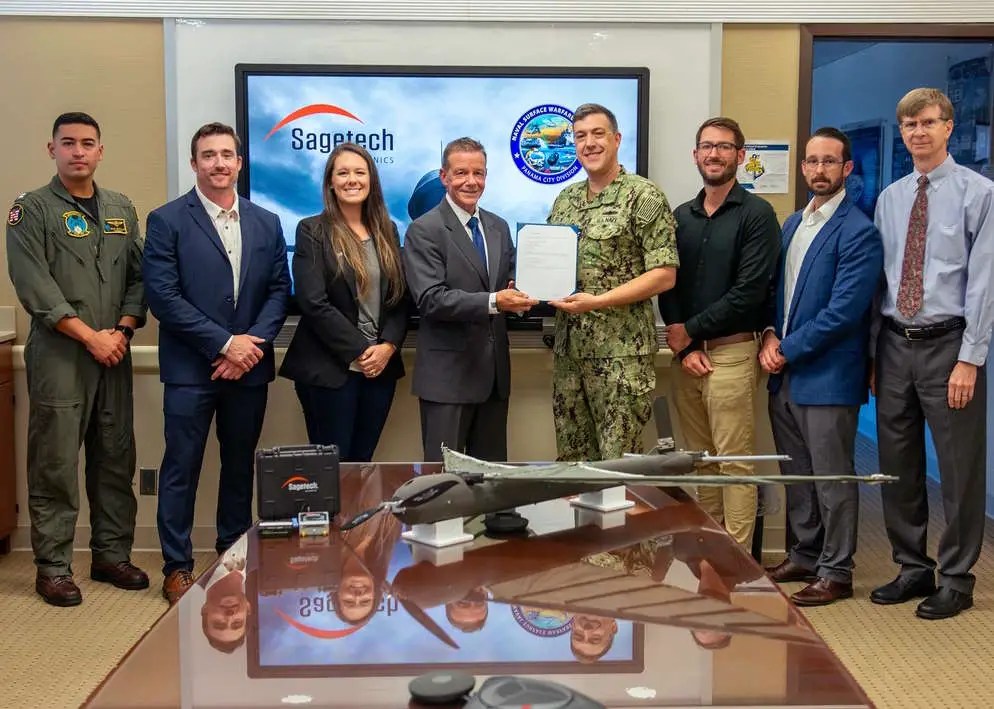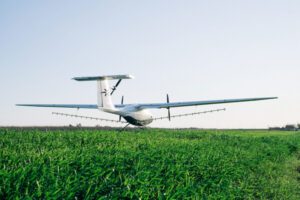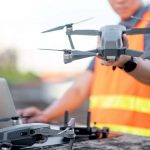The Department of Defense (DoD) currently has more than 11,000 UAS (unmanned aircraft systems). US military drones are used for surveillance and to carry out military attacks. But, there are many different types of drones available such as a switchblade drone and tactical drones.
Understanding the unique qualities of each drone helps allocate the right equipment to a specific mission. Two of the most popular drones are the Reaper drone and the Predator drone. Even though the United States Air Force uses both drones, they operate with different controls and designs.
Keep reading to discover more about these drones.
What Are Drones?
Drones have remote controls to move locations and carry out surveillance tasks. But drones can also be deployed for counterterrorism if necessary. Recently, the news covered a collision with an MQ-9 Reaper drone over the black sea, which gave more attention to this machine.
Since 1995, UAS has been part of the U.S. military, but the Reaper is the new model. The U.S. government has one of the largest collections of Reaper drones.
With the developments in technology, drones are able to function with more accuracy and precision. So, these machines are safer to use than they were in the past.
Here are the various types of military drones:
- Fixed-wing
- Multirotor
- Single-rotor
The fixed-wing drone is one of the fastest designs, operating similarly to airplanes. They use wings to take off and land, making getting from one location to another easier.
For surveillance, the multirotor is the first choice as the features allow you to have better control over the machine. A single-rotor needs more maintenance, but they last longer and are durable. So, they can be effective on long missions when drones are operating for hours at a time.
The Reaper Drone
Also known as MQ-9, the Reaper drone is primarily for intelligence collection. The military also uses the Reaper for planned attacks as it’s precise and resistant against quick targets. The Reaper can also identify route clearance, close air support, terminal air guidance, and surveillance.
This machine is versatile and an excellent asset for various missions requiring multi-communication modes. The Predator drone is larger than the Reaper drone. It also came after the Predator, so it has the equipment with the latest technology and features.
So, what makes the Reaper better than the Predator?
Reaper Drone Features
The drone is driven by a pilot and an aircrew professional who is in charge of the sensors as well as guidance. A baseline system called Multi-Spectral Targeting System (MTS-B) includes sensors and alerts drones to potential threats. The MTS-B has a daylight camera, laser designator, and laser illuminator.
Video recordings allow aircrew members to watch the footage and monitor movements remotely. Another advantage to the Reaper is that it can be broken up into small sections and put into a container for travel. So, transporting this drone is easy for last-minute or urgent missions.
Operating systems are controlled from U.S. airfields with line-of-sight features. This is helpful for landing and taking off, as pilots can ensure that the machine doesn’t have any damage after missions.
Extra fuel compartments make it easier to extend missions and have a backup fuel supply. The additional space allows this drone to operate for more extended periods of time and further distances.
Performance during landing and tracking off is excellent on the Reaper, as the propeller has an extra blade. Plus, there’s also an alcohol-water injection system, so the drone functions efficiently as soon as it leaves the airfield.
Weapons such as GBU-12 Paveway II laser-guided bombs, and AIM-9 Sidewinder can go in the storage on this drone. The total weight capacity for the Reaper is 4,900 pounds.
Typically, the Reaper is deployed in groups of four, and there have to be two officials in control of each drone. The Reaper is suitable for long-term operations as the controls can be switched midflight. This means a team can pass the controls to another base while the drone is flying.
Information About the Predator Drone
The Predator drone is an older model in the U.S. military that was the first to gather intelligence and conduct surveillance. MQ-1B is the name given to the Predator as the “M” represents multi-role and “Q” refers to the remote piloting features. Number one indicates that this model is the first in the series of remotely driven aircraft systems.
The CIA also has a group of drones for its missions overseas, but the operations remain secret from public knowledge. The history of drones is complex, and legislation is different every year for the use of machines in the U.S. military. For example, President Joe Biden has made tighter restrictions on the CIA using drones for deadly strikes.
As the U.S. government looks for ways to reduce the costs of drones, the Reaper is a more affordable option for the military. But, the design of the Predator still stands as a foundation for new models as it has strong features and resilience for long distances.
Drones are great resources in combat. If one machine is lost, another model can quickly launch to the location. This limits the risk of threats and damage.
Like the Reaper, multi-communication modes and wide-range sensors are in the Predator design. Plus, the Predator can make precise strikes on quick and high-value targets.
Predator Drone Abilities
Here is a list of all the abilities of the Predator drone:
- Combat search
- Precision strike
- Convoy/raid overwatch
- Target development
- Route clearance
Unlike the Reaper, this drone has the features to conduct irregular warfare missions.
There must be two aircrew members to fly this drone. A pilot and a member controls the sensors. But, in some cases, mission coordination is sometimes necessary if there is a long journey. This ensures that the drone operates at total capacity across several routes. For shorter missions, two people are enough to fly this drone.
So, the same amount of people are in control of both the Reaper and the Predator.
Components of the Predator Drone
This drone functions like an airplane and has the capacity to run for long distances without a lot of maintenance. The main features of this drone are four sensors, a weapon-equipped satellite link, and a ground control unit. A Predator drone can launch from a ground control unit or a satellite link.
Just like the Reaper, this drone has an MTS-B with the addition of a better camera. This is better for operations that require accurate footage and accurate images.
This drone can carry two laser-guided missiles and an Air-to-Ground Missile-114 Hellfire for weapons. It’s possible to take apart the Predator and load it onto another aircraft. So, this drone is also versatile for travel and deployments in various locations.
There’s an ARC-210 radio and turbocharged engine for better landing and take-off movements. This machine can operate for 40 hours and is 8.2m long.
The original Predator design had an upgrade to include a relief-on-station system (ROS) that improves the coverage time and air traffic control features.
A standout component of the Predator is the monitoring features that are amongst the best in the field of drones. The full-color camera makes it easier for pilots to control the machine without any difficulties. There’s also an aperture camera that provides more visibility and acts as surveillance alongside the pilot.
Pilots are able to see through smoke and clouds with the aperture camera and guide the drone to a new location through the night. This means this drone can operate at all times of the day, making it easier to deploy for longer travels.
Are There Benefits to Drones for Warfare?
Drones impact how the U.S. military carries out operations and surveillance, which means this development has pros and cons. Technology has advanced significantly, which means there are still elements that need improvement on machines like drones.
But, there are undeniably some benefits to using this equipment in warfare. In contrast to other drones used for deliveries or leisure, military drones are designed for high impact and speed. But they are also practical and affordable, which makes them great additions to the U.S. military team.
Improved Surveillance
Surveillance is a top priority for the U.S. military as it’s an important method for ensuring there are no terrorist attacks, and it protects national security. Drones with the latest technology, like the Reaper, allow pilots and aircrew members to have up-to-date information on targets.
In warfare, your targets’ accuracy and movements are crucial to preventing an attack. When you know the situation, you can plan in advance and countermove. But, not all drones are suitable for this task. The Predator and the Reaper are specifically for warfare tactics like an AMASS Drone Swarm.
Photos are more precise and clear without the need for the aircraft to get close to the ground. Drones have built-in features that are there to capture high-resolution images from a distance. This means that you can carry out surveillance at a safe distance and have better footage.
Affordable
Compared to conventional aircraft, drones are affordable and require fewer aircrew members to operate them. A team of pilots can be on a base and use several drones without the additional cost of manually flying an aircraft. Fuel costs are also less expensive as there’s less risk of error.
The technology that runs drones is precise, meaning the extra fuel compartments are ready to refuel the engine and won’t interrupt the flying time for maintenance checks. Pilots have fewer injuries and damage when drones are deployed on missions.
Drones allow you to have the benefits of being a professional pilot without the physical risk of flying an aircraft manually. Plus, there’s less waste of fuel for long missions. So, it’s also cost-effective.
Convenient for Deployment
Both the Reaper and the Predator can be folded and stored in separate pieces, so they are convenient for the military. This makes it easier to store these large units in secure containers. And it allows the U.S. military to have them nearby for emergency missions and surveillance operations.
Using drones is more efficient if you want to take off from a base or transport equipment quickly. Some drones don’t require runways; they only need airfields, making it easier to start their engines.
Training is less rigorous with drones than with other aircraft, so it’s more accessible for younger pilots to start this career. With the proper knowledge and experience, people can learn how to control drones more quicker than other aircraft designs.
Versatile Features for Any Situation
Flexibility is essential for U.S. military personnel as you need equipment that can be deployed at any moment. But you also need machines that are reliable and robust. Otherwise, your entire mission will be compromised.
Both of these drones offer a range of useful features that can be useful in many different situations. Here is an overview of the main elements of U.S. military drones like the Predator and the Reaper:
- Combat support
- Target practice
- Logistics
- Reconnaissance
- Control features
Overall, the main difference between the Reaper and the Predator is that the Reaper is a new model. But, the basic features and fundamental control are similar. From a distance, these drones have similar appearances and can be seen from the ground.
Now that you have the individual features, it provides insights how why these drones are popular with the military for complex and specific missions. In the future, military drones will include more technology like geotagging and 3D mapping, so this is just the beginning of their potential.
Learn More About the Future of Drones
It’s hard to keep up with the changing landscape of drones and their impact on warfare. A Reaper drone is a complex and modern machine that’s effective for precise strikes and surveillance.
But, a Predator drone was the first of its kind to change military air operations for long distances. So, it still holds significance in the world of military aircraft.
Read more about the future of drones, from military use to delivery drones, on our website. Stay up-to-date and engage with our enthusiastic drone community online!





